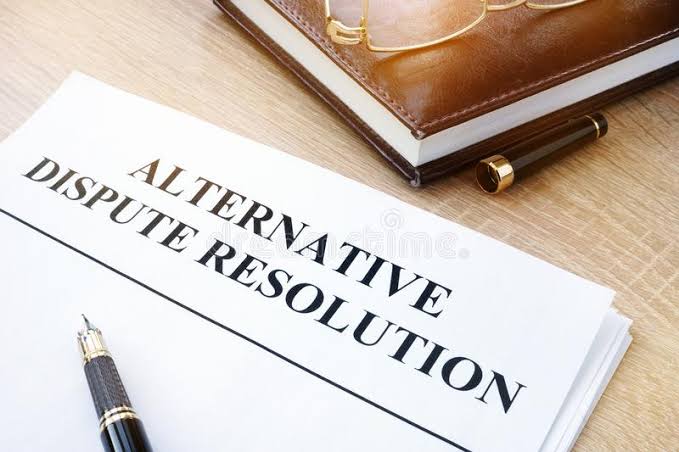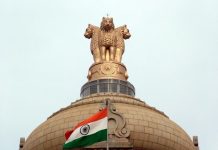This article is written by Sabaat Fatima, from HILSR, School of Law, Jamia Hamdard. The article will examine the models of alternative dispute resolution for settling intellectual property disputes.
Table of Contents
Introduction
The field of intellectual property protection has been noticing a huge surge of disputes in the Indian legal setting. The protection of the intellectual property creator is available for a limited period who has to enforce it effectively. As there is an excessive delay in our judicial system, there is an urgent need to look for other mechanisms and solutions to lessen the burden of the judiciary.
An introduction of a mechanism is necessary because the creator enjoys limited rights and the only remedy available is given under the substantive legislation. Alternate Dispute Resolution (ADR) models are gaining importance for carrying out disputes related to intellectual property protection. This article examines the usage of alternative dispute resolution mechanisms for protecting intellectual property rights in India.
Alternate dispute resolution and its types
The Arbitration and Conciliation Act, 1996 has been dealing with the two cited alternate forms of dispute resolution in India. The Civil Procedure Code, 1908 provides for the adoption of different models for the expeditious determination of disputes for instance arbitration, mediation, settlement, and consultation are the most common methods practised. The advantages of the ADR are flexibility, confidentiality, speedy remedy, cost-effectiveness, and business-oriented. Through the reading of Section 89 of the Civil Procedure Code, 1908, the judicial system of India tried to bring mediation and settlement in the disputes related to intellectual property in the established model of litigation.
In the case of Booz-Allen & Hamilton Inc v. SBI Home Finance Ltd. & Ors, the Supreme Court broadly discussed the law and laid down the test to determine the arbitrability of disputes and held that the disputes related to rights in personam are deemed to be arbitrarily amended while rights in rem are compelled to be adjudicated by courts and public tribunals. It was defined that right in rem regulates where a class of actions are arbitrable i.e., cases in which the disputes are arising out of a special statute or having limited jurisdiction of specific courts for instance disputes emerging out of criminal offences, matrimonial cases, guardianship, insolvency and winding-up, testamentary matters and eviction.
In the case of Bawa Masala Co. v. Bawa Masala Co. Pvt. Ltd. & Anr., several disputes were solved through the model of alternative dispute resolution. The Delhi High Court passed the orders to include the process known as early neutral evaluation in an intellectual property-based litigation suit. The court mooted to embrace such methods under the umbrella of Section 89 of the Civil Procedure Code, 1908 for cordial settling of disputes. The Court further stated the benefits of undertaking the method of early neutral evaluation. The Court stated that this method has similar features to the mediation model.
The difference is that in the case of mediation the mediator attempts to find the most acceptable solution while in the case of early neutral evaluation the evaluator acts as a neutral person to evaluate the strengths and weaknesses of the parties. The method of early neutral evaluation requires no statement oath and as such no neutral evaluation is recorded. This procedure is confidential and cannot be used by the parties against each other and thus, no citation or result is filed.
This stands as a landmark judgment where the Indian Courts tried to bring about an alternative dispute resolution mechanism for solving the infringement-related matters of intellectual property. This case also promotes the bent of the Indian Courts towards the interest of alternative dispute resolution standards in settling such disputes.
Types of ADR
Mediation
Mediation is a process in which the disputed parties mutually find a legal solution by signing a written contract and appointing a mediator. The mediator is the neutral third party who enables the disputable parties to reach a common ground and a point to note is that a mediator’s role is just to ease the way by finding out solutions and the power to decide lies with the parties only. The parties can nominate alternative dispute lawyers to represent their case before the mediator and explain the standpoint of the parties legally.
Arbitration
The process of arbitration is governed and administered by the Arbitration and Conciliation Act of 1996. Arbitration is a method in which a dispute is submitted to one or more arbitrators who makes an irrevocable decision between the parties in the dispute. The arbitration process can only take place when both the parties have agreed to it in the first place and by putting an arbitration clause in an agreement they have selected to prefer a private dispute resolution instead of getting involved in traditional litigation. It is the most popular among all the methods of alternative dispute resolutions as arbitration enjoys the merits of confidentiality, lower costs, greater flexibility, easy settlement, options of a forum, a ton of choices for solutions, etc.
Conciliation
The process of conciliation is governed and administered by the statute of the Indian Arbitration and Conciliation Act, 1996. Conciliation is a method in which a conciliator is appointed to resolve a dispute arising out of a legal relationship between parties and the court does not play an active part in this process. The conciliator plays an important role in this process as it attempts to reach some middle ground by persuading the parties to reach a settlement which is usually a cordial solution for the parties in dispute between the parties. The conciliator also assists this process by suggesting solutions to settle the dispute between the parties.
Negotiation
The negotiation process is not regulated by any Indian Law and as such has no fixed rules but this process follows a certain pattern. Negotiation is the method where the disputable parties can self counsel to settle the disputes i.e., there is no need to involve any third person in this method. Negotiation is an impromptu practice of the parties to communicate properly to bring a solution that is beneficial for both parties. and it is a non-binding process. Parties have full dominance over the process of mediation and its outcome.
Need for alternate dispute resolution in patent disputes
The creators of intellectual property and their efforts are valued based on the sign of the rights attached to ‘intellectual output’. The protection of intellectual property provides a hand to the creator to exercise his powers over third parties, who, without his permission, try to use their hard work. The basis for the creation of rights gets crushed if they are not carried out. The creators of intellectual property have to be their protectors and take help from the Courts if their rights get infringed.
Indian courts have taken a big jump towards the development of an intellectual property administration in India. Matters relating to patent law and copyright law, which involve meeting with science and an understanding of technology, require special arbitrating officers, who can understand the interdisciplinary nature of the case. As there is limited time given to the owner for the protection of intellectual property rights this calls for acquiring mechanisms to enforce immediate justice.
In the case of Shri Vardhman Rice & Gen Mills v. Amar Singh Chawalwala, the Supreme Court held that matters relating to trademarks, copyrights, and patents should be decided promptly by the Trial Court rather than just granting or refusing to grant an injunction. In matters relating to trademarks, copyrights, and patents, litigation is mainly fought between the parties about the interim injunction and that continues for years and the result is that the suit is hardly decided. But, this is not appropriate. In the opinion of the court, the provision to Order XVII Rule 1(2) C.P.C. should be strictly observed by all the Courts, and the hearing of these cases should proceed daily and the judgment should be finalized within four months from the date on which the suit was filed.
In the case of Bajaj Auto Ltd. v. TVS Motor Company Ltd., the Supreme Court reiterated its stance and held that the provision to Order XVII Rule 1(2) C.P.C. should be obeyed by all courts and tribunals punctually and faithfully. It is obvious that because of unwarranted delay in the finalizing of cases and the costly litigation which could delay the protection concurred to the work, instead of promoting the progress of intellectually protected work, the aggrieved parties are opting for alternate dispute resolution models for the progression of intellectual property rights in India. Additionally, the commercial nature of the transactions associated mostly with intellectual property-based litigations requests such an approach.
Patent Law and ADR
Patent law directs the technology field with law. Patent disputes involve an understanding of technical knowledge but, the biggest difficulty which the Indian Courts face is about simplifying the trial of the dispute cost-effectively and promptly. Every dispute in the realm of patent law in India has revolved around the details of temporary injunction and appeals related to it. Section 103 of the Patents Act, 1970 comprises arbitration as a method for resolving disputes. Implementation of alternative dispute resolution machinery in patent infringement cases can help in the proper delivery of justice.
ADR in India
ADR existed in India even before when the new act was enacted. The old Arbitration Act, 1940 comprised ADR too. The new act ‘the Arbitration and Conciliation Act 1996’ was advanced to contain the provisions of UNCITRAL MODEL. Section 89 of the Civil Procedure Code, 1908 was also included and amended to settle the disputes outside the court with the mutual consent of the parties.
ADR in the U.S.A
Former President, Abraham Lincoln, once said to discourage litigation and adopt the method of persuading to compromise whenever you can. This statement reveals the significance of dispute resolution through compromise and non-litigation procedures. In the USA, ADR existed in the early 1960s to solve civil disputes. It means a system that is unique and different from traditional litigation. Mediation, arbitration, and negotiation are part of the rule of law.
ADR in the U.K
Alternative Dispute Resolution methods are used to resolve disputes in the UK by providing a cost-effective, speedy mode and confidentiality between the parties of settling disputes for the employers, bankers, and other professionals.
Conclusion
Patent infringement cases have soared in present-day times because of scientific and technological progressions in different fields of study. The market rivalry has inspired the makers to make inventions and from there on getting elite rights over them for monetary advantages. Alongside this competition comes an anticipated commotion of patent infringement disputes which have driven numerous parties to court. It is high time that the promotion of ADR mechanisms should be encouraged and the government can develop the state of ADR in the country by training personnel, laying down appropriate guidelines, incorporating legal support, etc.
It can prove to be useful as it will support asynchronous communication between the parties, making it simpler for arriving at an agreeable answer for the dispute. It is upon the stakeholders to adopt a holistic strategy for achieving the suitable changes needed in the process of alternative dispute resolution models and build up a quiet, speedy, and cost-effective settling method.
References
- https://www.lawyersclubindia.com/articles/Patent-Disputes-Arbitrating-All-The-Way–5698.asp.
- https://blog.ipleaders.in/suitability-adrs-particular-types-disputes/#Conclusion.
- https://singhania.in/blog/alternative-dispute-resolution-and-the-law-of-intellectual-property.
- https://www.indiacode.nic.in/show-data?actid=AC_CEN_11_61_00002_197039_1517807321764§ionId=15970§ionno=103&orderno=106.
- https://indiankanoon.org/doc/188958994/.
- https://indiankanoon.org/doc/1858612/.
- https://blog.ipleaders.in/https-blog-ipleaders-in-early-neutral-evaluation-a-detailed-analysis/.
- https://www.legitquest.com/case/ms-shree-vardhman-rice-gen-mills-v-ms-amar-singh-chawalwala/51661.
- https://indiankanoon.org/doc/1176027/.
- https://www.indiacode.nic.in/handle/123456789/2191?sam_handle=123456789/136.
- https://www.indiacode.nic.in/show-data?actid=AC_CEN_3_20_00051_190805_1523340333624§ionId=33427§ionno=89&orderno=95.
- https://www.indiacode.nic.in/handle/123456789/1392?sam_handle=123456789/1362.
- https://indiankanoon.org/doc/1052228/.
- https://uncitral.un.org/.
- https://www.goodreads.com/quotes/64491-discourage-litigation-persuade-your-neighbors-to-compromise-whenever-you-can.
- https://indiankanoon.org/doc/1306164/.
- https://amity.edu/UserFiles/aibs/3e21Article-VIII%20(Page%2050-54).pdf.
LawSikho has created a telegram group for exchanging legal knowledge, referrals, and various opportunities. You can click on this link and join:













